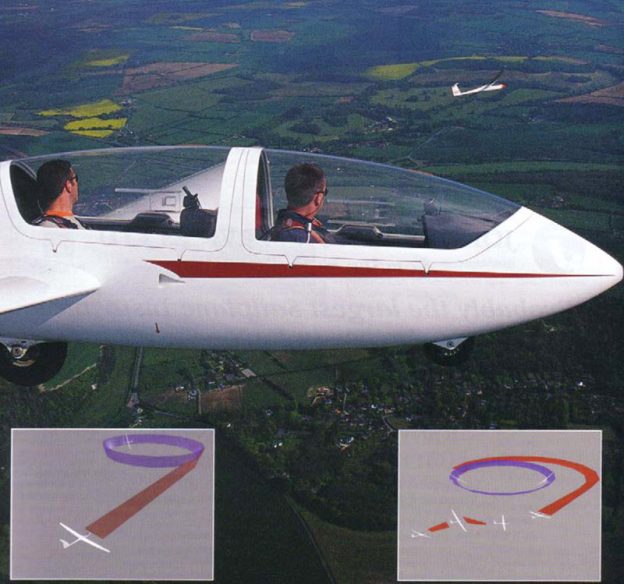If we are going to be seen by the other glider and keep the other glider in sight, we must first understand the blind spots that gliders have and – more importantly – the situations that might lead to both gliders being in each other’s blind spots.
Before we consider sharing a thermal we will have to think about how we are going to join a thermalling glider. This is where we will need to make certain assumptions. The first assumption is that the circling glider has found a good climb and is already centred on it. This means that no time will be wasted trying to centre the thermal once we join. In order for this to work, it is vital that the other pilot stays in the core and can concentrate on centring it without having to worry about avoiding you.
If we join the thermal in such a manner as to alarm the other pilot then they may move their turn to give them greater separation or comfort; this means that they lose the thermal core and you have to waste time recentring the thermal. In other words: you’ve blown it. Apart from the obvious disadvantages of a lower overall climb rate, the consequences of joining a thermal badly can be that we conflict with the other glider, increasing the risk of collision.
This risk can once again be minimised by a few basic rules:
- The first glider has right of way
- Join the thermal so that you turn in the same direction
- Join in such a manner that the other glider does not have to manoeuvre in order to avoid you
- If there is more than one glider and they are thermalling in different directions then turn in the same direction as the one closest to your height
The perfect join is one that places you exactly opposite the other glider, sufficiently far away so that you can remain opposite them with a comfortable angle of bank and speed (see diagram, above right). Before we can do this we must first assess the extremities of the other glider’s turn. This is easy to do but rarely explained. Simply watch the other glider’s turn until you can see it rear-end on, then mark a point on the horizon, which will then mark the boundary of its turn. Provided we fly towards this point we will end up intercepting their turn at a tangent (assuming they don’t alter their turn). If it looks likely there will be no conflict then continue on into the turn (see above page, left) keeping the other glider opposite you.
This method of joining another glider sounds simple enough but is in fact rather difficult to do, and the chances of entering the thermal when the other glider is not opposite you are high. If this looks like the case then we will need to enter the thermal in a spiral fashion. Source: ‚British Gliding Association.


